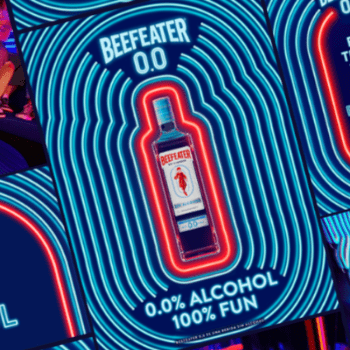Although spirits volumes in the US fell by 3% in the first seven months of 2024 due to downtrading, non-alcoholic variants told a different story.

From January to July 2024, IWSR data found that alcohol-free ‘spirits’ volumes were up by 29% compared to the same period in 2023.
However, the spirits subcategory remains small in the alcohol-free sector compared to beer/cider alternatives, which account for 81% of servings (IWSR).
Last year, data from IWSR found that alcohol-free ‘spirits’ and the non-alcoholic ready-to-drink (RTD) segment rose by 32% and by 36%, respectively.
It has been predicted that the global non-alcoholic ‘spirits’ sector could be worth US$271 billion by 2033, and the likes of Diageo and Pernod Ricard have both made big plays into the sector this year.
Looking at the declines for spirits, Marten Lodewijks, president IWSR US, said that “greater consumer awareness of health and wellness has also played a role”, as consumers reduce alcohol intake and aim for a healthier lifestyle.
He added: “While this trend skews more towards younger consumers, it’s by no means restricted to them and it is seen across the generations to varying degrees.
“This is likely driven in part by increased awareness of general health, as a result of the pandemic, but likely exacerbated by the increased media coverage of dietary guidelines like the World Health Organization (WHO) claiming there is no safe level of alcohol consumption.”
Category declines in US
Using its US Navigator, IWSR found that spirits volumes in the US were down by 3% from January to July 2024. Categories that have been on the up in interest and demand over the past few years such as agave-based spirits (down 1%) and American whiskey (down 2%) were both in decline.

In addition, the declines were across all categories bar flavoured spirits, which was up by 1%.
Vodka was down by 4% from January to June 2024, total whisky by 3%, rum by 5%, gin and genever by 3%, while brandy saw the biggest fall, declining by 7%.
Lodewijks attributed this to a “natural correction” following the pandemic and economic pressures on people that also eventuated from the pandemic.
Speaking of the main drivers behind the declines and the economic pressures on consumers as a result of increased prices post pandemic, he explained: “This isn’t exclusively due to increasing prices of only alcohol (although that is certainly a factor) but because of increased prices across most consumer categories, forcing consumers to make a trade-off between discretionary items like alcohol in favour of essential items (food, personal care, etc.).
“A secondary effect of this is that we’re seeing consumers ‘downtrade’ to different categories, particularly beer and RTDs because the out-of-pocket cost for these categories is lower than for spirits so a consumer can buy a premium beer instead of a mainstream spirit and effectively save money while not feeling like they lost out.
“There is also a natural post-pandemic correction happening. Immediately post-pandemic, spirits sales soared, effectively doubling growth in 2020 and 2021 vs. the prior 25 years. This blip began to normalise in 2022 and 2023. From that point onward, the economic pressure is believed to have had a greater impact, compounding a natural slowdown.”
IWSR data for 2023 showed that spirits reported its first drop in the US market in nearly 30 years, down by 2% in volume for the 12-month period.
IWSR noted that spirit-based RTDs are driving gains in the States (RTDs were up by 2%, but spirit-based variants rose by 11%) and account for more than 16% of category volumes.
Tel: 07828778616
Email: info@hengzun-drinks.com
Add: 133a, Rye Lane, London, SE15 4BQ